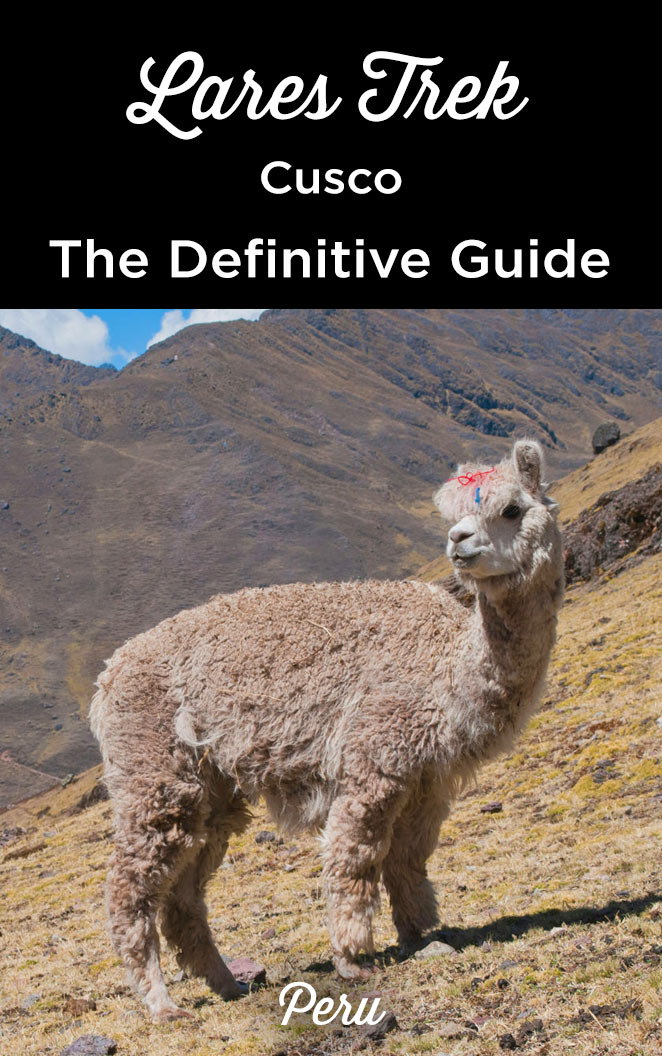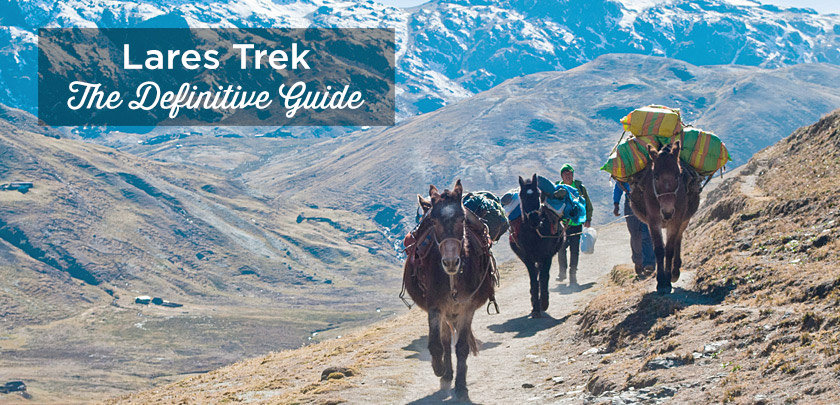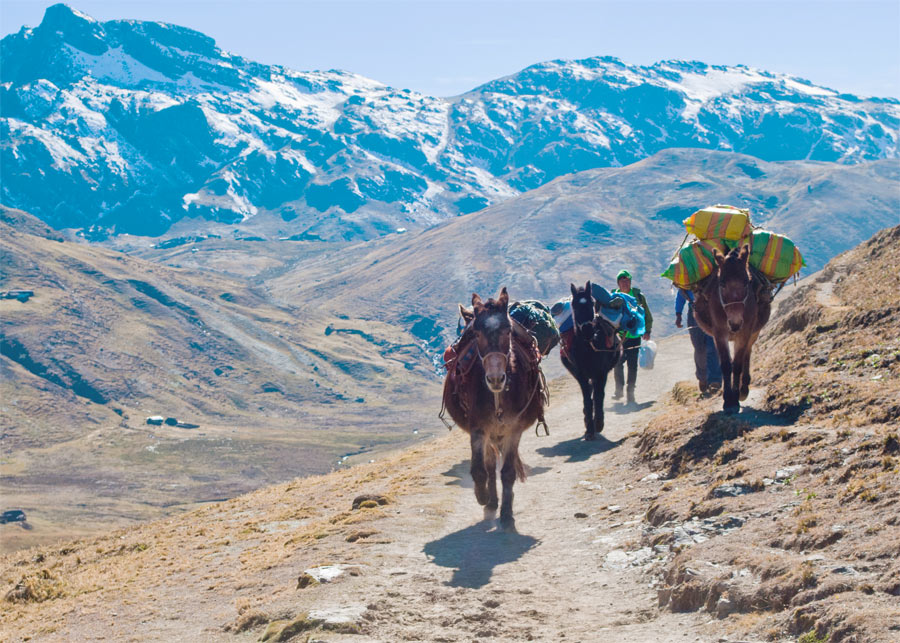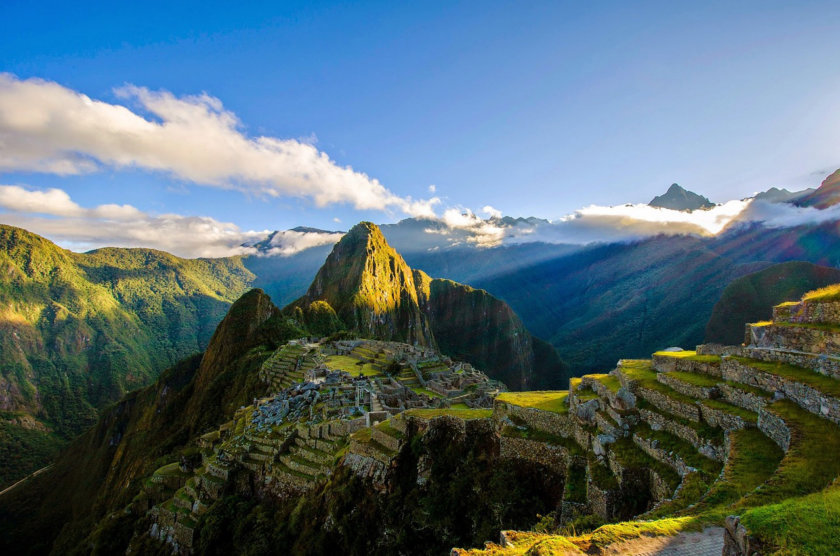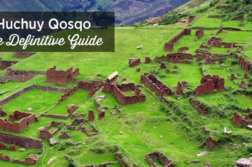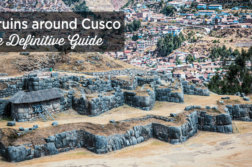How to Hike the Lares Trek to Machu Picchu: Complete Guide
The Inca Trail may be the most famous route to Machu Picchu, but it’s far from the only one.
If you’re looking for something less crowded, more affordable, and equally breathtaking, there are some incredible alternative treks to consider—like the Salkantay Trek, the Huchuy Qosqo trail, or the Lares Trek.
Among them, the Lares Trek stands out as a hidden gem: a journey through ancient Inca paths, passing glacial lakes, lush valleys, and snow-capped peaks, with a unique opportunity to connect with remote Andean communities.
It’s an unforgettable way to immerse yourself in local culture and unspoiled nature—without the crowds.
In this guide, you’ll find the full 4-day Lares Trek itinerary (3 days of hiking + 1 day at Machu Picchu), plus practical tips to help you prepare your adventure with confidence.
I’ll also share advice on what to pack, how to choose the right agency, and where to stay before and during the trek.
Sommaire
- How to Hike the Lares Trek to Machu Picchu: Complete Guide
- Itinerary of the Lares route – 4 days/3 nights
- Lares trekking: practical information
- Other treks to discover
- Map of the Lares route
- Where to stay for the Lares trek?
- Book Your Flight at the Best Price
- Rent a Car in Peru
- Traveling to Peru? These articles will help you!
Itinerary of the Lares route – 4 days/3 nights
There are 5 different itineraries for the Lares route, and the one I present here is just an example to give you a general idea of the way. It is also possible to do Lares on horseback.
- Difficulty of the route: medium
- Altitude: from 9,350 to 14,425 feet
Day 1: Cusco-Lares-Huacahuasi (4h trekking)
In the morning we will leave Cusco by transport to the village of Lares, the starting point of the trek, passing through Calca to visit the local market and have breakfast.
Later, at 10,660 feet, there is a chance to enjoy the hot springs of Lares with its medicinal properties, whose temperature ranges between 96.8°F and 112°F
After lunch, the official start of the hike to Huacawasi (9,390 ft), where the women of the community will share with you their knowledge of wool weaving and you will meet the muleteers who will accompany you for 3 days.
You will be able to choose between camping or sleeping with the locals.
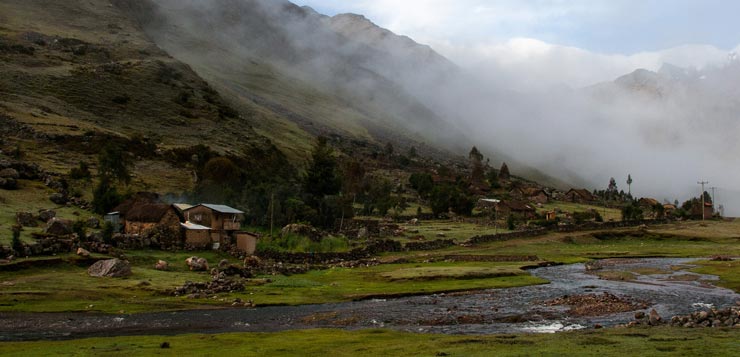
Day 2: Huacawasi – Sacsayllame – Miski Unu (7h hike)
After breakfast, you will begin the ascent to the Sacsayllame pass, the highest point of the trek (14,435 ft).
This is the most demanding section of the trek to Lares, but it offers beautiful scenery between snow-capped mountains, streams and farmland.
There is then a steady descent, first to a lake to rest and have lunch, and then through the forest to Miski Unu (8,650 ft), which will be the campsite for the night.
Day 3: Miski Unu – San Isidro – Ollantaytambo – Aguas Calientes (4h hike)
The day begins with a walk through the forest of the Mantanay nature reserve discovering the local flora and birds of the area (beware of mosquitoes!).
We will have lunch upon arrival in San Isidro, then take the bus to Ollantaytambo to visit the village and possibly the ruins for those who wish it.
In the afternoon, we will go to Aguas Calientes by train to spend the night there.
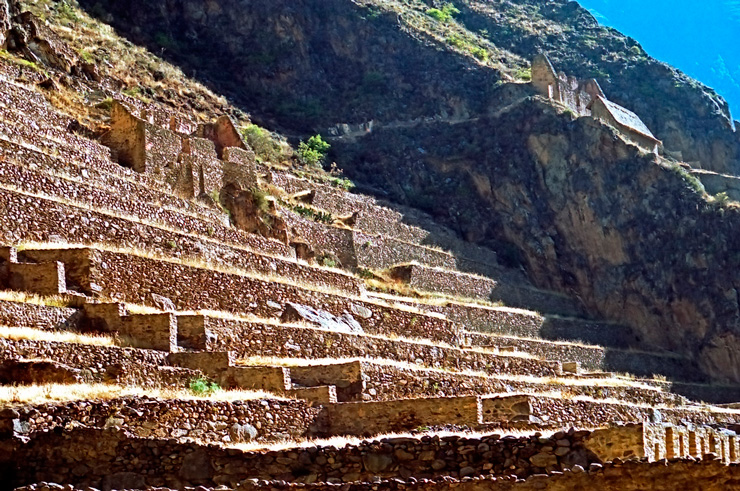
Day 4: Aguas Calientes-Machu Picchu-Cusco
Early in the morning you will take a bus to Machu Picchu to be among the first in the citadel to see the sunrise.
After a guided tour and free time, you will return to Aguas Calientes and then to Cuzco by train.
Lares trekking: practical information
Which agency to choose for the Lares trek?
Although it is not mandatory to bring a guide, I strongly recommend that you do the Lares trek with an agency for safety reasons.
The Lares trek requires a good physical preparation and presents altitude changes, something not to be taken lightly!
That is why it is very useful to have a specialized guide who knows the terrain well.
It also allows you not to carry all your personal belongings and enjoy the trek to the fullest.
I recommend this 4-day tour that includes pick-up at your hotel, entrance fees, transportation to Lares, train to and from Lares, meals, guides and porters, with 1 night accommodation in Aguas Calientes. Book here:
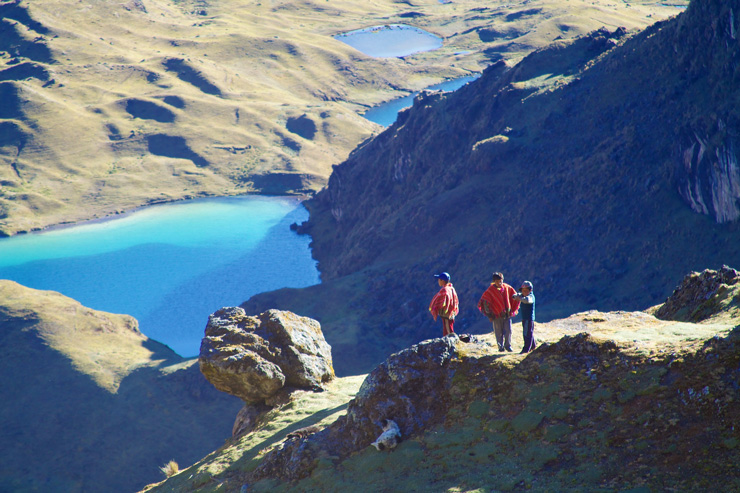
What is included in the price of the trek?
There may be variations depending on the agency chosen and the price paid, but in general:
- Includes: guide, assistant, hot meals, tents, mats, camping equipment, pack horses, cooks, all transfers, bus to and from Machu Picchu, bus to Quishuarani, bus to Ollantaytambo, trains Ollantaytambo-Aguas Calientes and Aguas Calientes-Cusco, entrance to Lares, entrance to Machu Picchu + Walking Horses (if you choose the route on horseback through Lares).
- Not included: sleeping bag, dinner 4th day, night in Aguas Calientes, tips*
*tips for guides, muleteers and cooks are always welcome! You can also think about buying clothes or school supplies for the muleteers’ children.
Is it possible to do the Camino de Lares on your own?
Yes, it is possible if you are used to hiking, as you must take into account that the highest point of the route is 13,780 feet.
As mentioned at the beginning of the article, there are several possible routes, and a good option on your own is to take the bus from Cuzco to Calca (2h), and then a colectivo to Huarán to start the trek.
- Entrance to Machu Picchu (general entrance, the cheapest one).
- Entrance ticket Machu Picchu + Huayna Picchu (must be purchased several months in advance).
- Ticket Machu Picchu + Machu Picchu Mountain
You can also book your train from Ollantaytambo to Aguas Calientes here
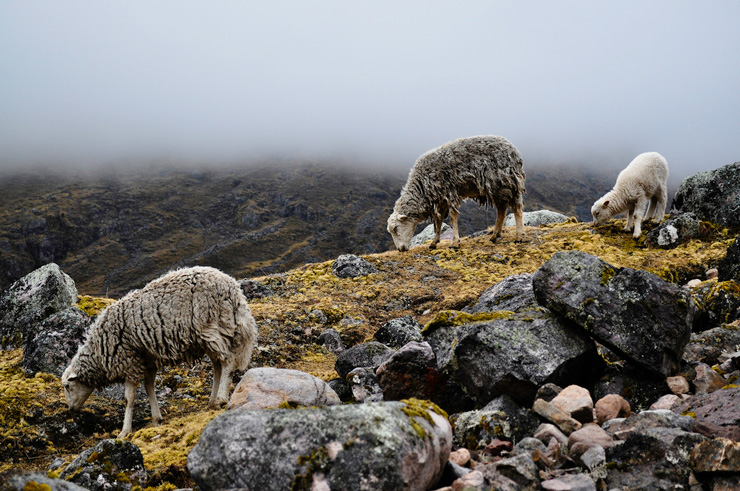
When to trek to Lares?
The ideal time to do the Lares trek is from the end of March to the beginning of December, to avoid the rainy season.
What to bring for the Lares trek?
Here is a check-list for the Lares trek:
- Backpack.
- Rain poncho (much more practical than a raincoat).
- Light and warm clothes (there are big temperature differences on the trail!).
- A pair of rain pants and another pair of light pants.
- Trekking shoes and sandals (to ventilate the feet when resting).
- Several pairs of socks.
- Hat or cap.
- Swimming suit (if you plan to take advantage of the thermal baths of Aguas Calientes).
- Sunscreen.
- Mosquito repellent.
- Water bottle and water purifier (tablets or drops).
- Toilet paper.
- Bag Ziploc bag to protect your electronic devices (in case of rain).
- Snacks (cereal bars, dried fruits).
- Passport (required at the entrance to Machu Picchu).
Other treks to discover
Before making your final choice, I invite you to discover the other magnificent treks in the region through my guides:
- All About the Inca Trail
- The Complete Guide of the Salkantay Route
- The Alternative Route of Huchuy Qosqo
Map of the Lares route
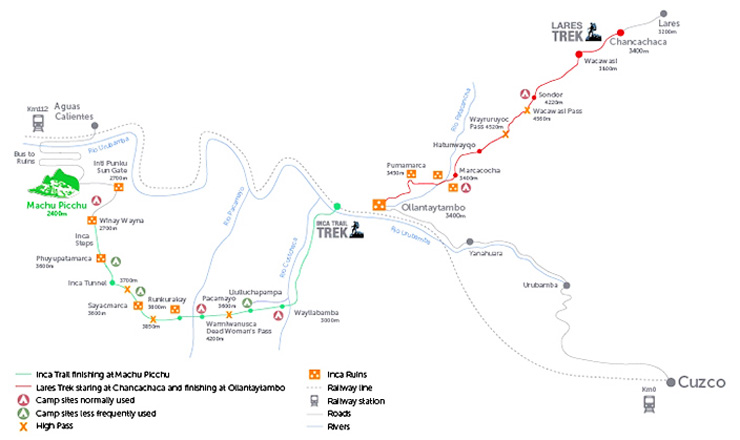
Where to stay for the Lares trek?
Staying in Aguas Calientes
If you decide to do the Lares trek without an agency, here are my recommendations for hotels in Aguas Calientes, for all budgets:
Where to Stay in Aguas Calientes (Machu Picchu Pueblo)
- Municipal Camping: The cheapest option is camping in Aguas Calientes, just 20 minutes from downtown. For only 15 soles per tent, you get access to restrooms, cold showers, and a cooking area. Don’t forget to bring toilet paper and food beforehand. Not recommended from December to February due to heavy rains.
- Nativus Hostel Machu Picchu: A clean and colorful hostel with a rooftop terrace, happy hour bar, and restaurant. Great location away from the noise. Breakfast included. Dorm beds from just $14 USD and private rooms from $54 USD.
- Panorama B&B: Just a few steps from the market, train station, and Machu Picchu bus stop. Offers panoramic views of the river and surrounding mountains. A comfortable hotel with a warm welcome from Christophe, the owner, always ready to share local tips. From $101 USD per night.
- Casa del Sol Boutique Hotel 4*: Ideal for a romantic stay, with rooms offering river views and jacuzzi, spa, and pool access. Breakfast and dinner included at the Manko Restaurant. From $227 USD per night.
- Inkaterra Machu Picchu Pueblo Hotel 5*: This stunning eco-lodge on the banks of the Vilcanota River is the best option for a luxury stay in Peru. Set in a private 5-hectare garden home to 372 orchid species, 162 bird species, 108 butterfly species, and even a freshwater waterfall. Breakfast and dinner included. From $448 USD per night.
Staying in Cusco
Where to Stay in Cusco
- Backpacker La Bo’M: One of the best hostels in Cusco. Founded by Sarah, a French expat, it includes a delicious crêperie next door. Perfectly located in the charming neighborhood of San Blas, it offers good Wi-Fi, a cozy vibe, and of course, amazing crêpes to start your day! Dorms from only $13 USD and private rooms from $33 USD.
- La Casona Real Cusco: For those looking for more comfort, this charming traditional-style guesthouse is located on a quiet street just steps from the Plaza de Armas. Impeccably clean, with hot water, great Wi-Fi, and a warm welcome. Breakfast included, all from just $76 USD per night!
- Hotel Tierra Viva Cusco San Blas: In the lovely San Blas neighborhood, this upscale hotel offers spacious rooms with very comfortable beds. Its modern décor with local touches and peaceful interior courtyard make for a relaxing stay. Buffet breakfast included. From $98 USD per night!
- Antigua Casona San Blas: A chic and intimate 4-star hotel in San Blas. It features very comfortable rooms, a warm atmosphere, and a tasteful blend of modern and traditional décor. Don’t miss their Piedra & Sal restaurant, one of Cusco’s best. Excellent breakfast included. From $250 USD per night.
- Palacio del Inka, a Luxury Collection Hotel: For a romantic stay in Cusco, this 5-star gem is housed in a spectacular colonial building across from Coricancha, with roots dating back to Inca times. Enjoy the indoor pool, gym, spa, bar, and restaurant. Delicious breakfast included. From $325 USD per night.
Book Your Flight at the Best Price
Planning a trip to Peru? To get the best deal on your flights, I recommend using this flight comparison tool, in partnership with Skyscanner.
It’s the easiest way to find the lowest prices for both international flights and domestic flights within Peru—ensuring you pay the best rate with no hassle!
Rent a Car in Peru
Renting a car is one of the best ways to explore Peru at your own pace and make the most of your trip!
Personally, I always use Booking.com Cars for a few key reasons:
- Easily compare prices from all major rental agencies in one place—finding the best deal has never been easier!
- Free cancellation on most bookings, so you can reserve with peace of mind.
- Better insurance coverage at a lower price than rental companies—saving you money with no extra effort.
Click the button below to find the best car rental deals in Peru:
Rent a car
Book entrance tickets and guided visits
Take a travel insurance
Book a tour
✈️ Book your flight
Traveling to Peru? These articles will help you!
Discover all my articles about Peru: All my tips and itineraries to plan your trip in one place!
40 EPIC Things to Do in Peru (+ My Best Tips)
- Huchuy Qosqo Trek: The Definitive Guide + Tips
- Itinerary: 5-6 days in Peru – Lima, Arequipa, Colca Canyon, Cusco, Sacred Valley and Machu Picchu
- Itinerary: 7-8 days in Peru – See the maximum in one week
- Itinerary: 10 days in Peru – The ideal itinerary for a short stay in Peru
- Itinerary: 2 weeks in Peru – The classic route
- Itinerary: 15 days in Peru – An itinerary that includes northern Peru
- Itinerary: 3 weeks in Peru
- Itinerary: 3 weeks in Peru + Bolivia – The best itinerary for visiting both countries
- Itinerary: 1 month in Peru – What to see and do in 30-31 days
You’re using Pinterest? Here is the picture to pin!
